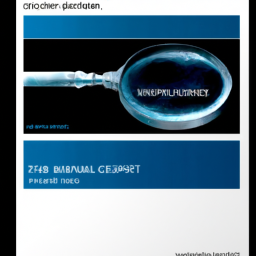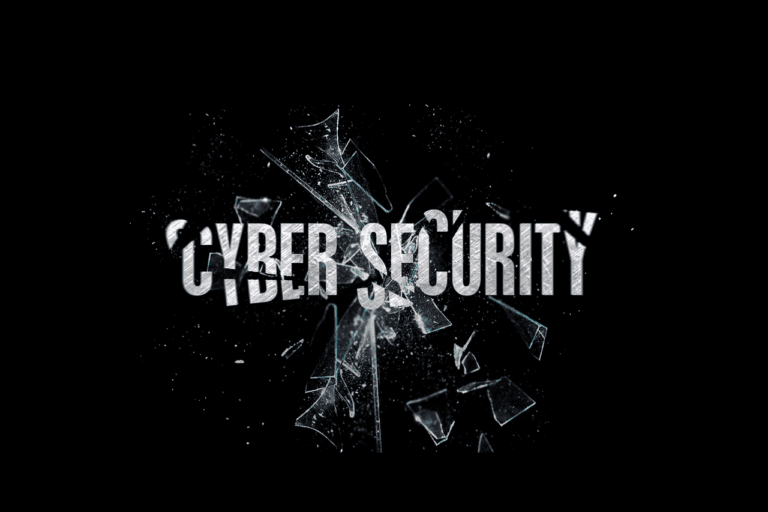How Can Organizations Implement A Secure DevOps Process?
Are you looking to enhance the security of your organization’s DevOps process? In today’s rapidly evolving digital landscape, ensuring the safety and integrity of your DevOps practices is crucial. With the increasing frequency of cyber threats, organizations must implement a secure DevOps process that not only accelerates software development but also prioritizes robust security measures. In this article, we will explore various strategies and best practices to help organizations establish a secure DevOps process, safeguarding their infrastructure and protecting sensitive data.
1. Define the Goals and Objectives
1.1 Establishing Security Objectives
When implementing a secure DevOps process, it is crucial to define clear security objectives. These objectives should align with the organization’s overall security goals and provide a framework for guiding the implementation of security measures throughout the DevOps pipeline. Some common security objectives may include protecting sensitive data, ensuring system availability, and preventing unauthorized access. By clearly defining these security objectives, organizations can prioritize security efforts and effectively allocate resources to achieve them.
1.2 Setting DevOps Goals
In addition to security objectives, organizations should also establish DevOps goals that align with their business objectives. These goals may include accelerating software delivery, improving scalability, and increasing collaboration between development and operations teams. By setting clear DevOps goals, organizations can ensure that the implementation of security measures does not hinder the agility and speed of their DevOps processes. Finding the balance between security and efficiency is crucial for a successful and secure DevOps implementation.
2. Foster a Security-Focused Culture
2.1 Promote Collaboration and Communication
One of the key aspects of implementing a secure DevOps process is fostering a culture that prioritizes security. This can be achieved by promoting collaboration and effective communication between development, operations, and security teams. By encouraging teams to work together and share their knowledge and expertise, organizations can ensure that security considerations are incorporated into every stage of the DevOps pipeline. Regular meetings, training sessions, and cross-team collaboration can help create a security-focused culture where everyone understands the importance of their role in maintaining a secure DevOps environment.
2.2 Educate and Train Employees on Security Best Practices
Education and training play a crucial role in building a security-focused culture within an organization. Providing employees with the necessary knowledge and skills to identify and mitigate security risks is essential for implementing a secure DevOps process. Training programs should cover topics such as secure coding practices, vulnerability management, and incident response procedures. By investing in continuous education and training, organizations can empower their employees to make informed decisions and take proactive measures to enhance security throughout the DevOps lifecycle.
3. Implement Security in the Early Stages of DevOps
3.1 Integrate Security into the Planning Phase
To ensure the effectiveness of security measures, it is essential to incorporate security considerations into the planning phase of the DevOps process. This involves involving security professionals early on in the process to identify potential security threats and define security requirements. By integrating security into the initial planning discussions, organizations can proactively address security concerns and make informed decisions that enhance the overall security of their DevOps environment.
3.2 Conduct Threat Modeling and Risk Assessments
Threat modeling and risk assessments are vital steps in identifying and mitigating potential security risks. These activities involve systematically analyzing the system architecture, identifying possible threats, and assessing their potential impact on the DevOps pipeline. By conducting these assessments, organizations can prioritize security efforts, allocate resources effectively, and implement the necessary controls to mitigate identified risks.
3.3 Implement Secure Coding Practices
Secure coding practices are fundamental in preventing vulnerabilities and ensuring the security of software applications. By implementing secure coding practices, organizations can minimize the risk of introducing vulnerabilities during the development phase. This includes following secure coding guidelines, conducting code reviews, and using automated security testing tools. Proactively addressing security concerns during the coding phase is critical for building a solid foundation for a secure DevOps process.
4. Automate Security Processes
4.1 Implement Continuous Integration/Continuous Deployment (CI/CD)
Continuous Integration/Continuous Deployment (CI/CD) is a critical component of a successful DevOps process. It allows organizations to streamline the software development and deployment process, ensuring faster delivery of software updates. When implementing a secure DevOps process, it is essential to integrate security into the CI/CD pipeline. This can be achieved by automating security testing, vulnerability scanning, and code analysis tools. By incorporating security automation into the CI/CD process, organizations can detect and address security issues early on, minimizing the risk of vulnerabilities being deployed into production.
4.2 Utilize Security Automation Tools
In addition to integrating security into the CI/CD pipeline, organizations should also leverage security automation tools throughout the entire DevOps lifecycle. These tools can automate the scanning of code repositories for vulnerabilities, monitor for suspicious activities, and generate alerts for potential security breaches. By utilizing security automation tools, organizations can streamline security processes, improve efficiency, and ensure the consistent and reliable implementation of security measures.
4.3 Employ Testing and Vulnerability Scanning Automation
Automating testing and vulnerability scanning is crucial for maintaining a secure DevOps process. By using automated tools to conduct regular security tests and vulnerability scans, organizations can identify and address potential vulnerabilities proactively. These automated tests should cover a range of areas, including application code, infrastructure configuration, and network security. By regularly scanning for vulnerabilities and weaknesses, organizations can minimize the risk of potential security breaches and ensure that their DevOps environment remains secure.
5. Regularly Monitor and Update Security Measures
5.1 Implement Monitoring and Logging Systems
Implementing monitoring and logging systems is essential for maintaining visibility into the security of the DevOps environment. These systems enable organizations to detect and respond to security incidents promptly. By monitoring network traffic, system logs, and application behavior, organizations can identify suspicious activities, detect intrusion attempts, and mitigate potential security threats. Additionally, logging systems allow for post-incident analysis, enabling organizations to learn from security incidents and improve their security measures.
5.2 Conduct Regular Vulnerability Assessments and Penetration Testing
Regular vulnerability assessments and penetration testing are critical for identifying potential weaknesses in the DevOps environment. These assessments involve systematically identifying vulnerabilities and attempting to exploit them to assess the effectiveness of existing security measures. By conducting regular assessments and penetration tests, organizations can uncover security flaws, prioritize remediation efforts, and ensure that their DevOps environment remains secure against evolving threats.
5.3 Stay Updated with Security Patches and Updates
Regularly updating and patching software and systems is vital for maintaining the security of the DevOps environment. Organizations should establish a process for monitoring and applying security patches and updates promptly. By staying updated with the latest security fixes, organizations can address known vulnerabilities and protect their applications and infrastructure from potential threats. This includes regularly updating software frameworks, libraries, and third-party dependencies used in the DevOps pipeline.
6. Establish Access Control and Privilege Management
6.1 Define User Access Policies and Roles
Establishing clear user access policies and roles is crucial for ensuring that only authorized individuals have access to sensitive systems and resources. Organizations should define access control policies that align with industry best practices and regulatory requirements. This includes implementing the principle of least privilege, where users are granted only the minimum privileges required to perform their tasks. By defining user access policies and roles, organizations can minimize the risk of unauthorized access and ensure that security measures are consistently enforced.
6.2 Implement Multi-Factor Authentication (MFA)
Multi-factor authentication (MFA) adds an extra layer of security by requiring users to provide multiple forms of identification to access systems and resources. Implementing MFA is essential for protecting sensitive information and preventing unauthorized access. By combining something the user knows (such as a password) with something the user has (such as a security token or biometric data), organizations can strengthen their access control mechanisms and reduce the risk of unauthorized access to the DevOps environment.
6.3 Regularly Review and Update Access Control
Access control mechanisms should be regularly reviewed and updated to ensure their effectiveness. This includes regularly auditing user access rights, removing unnecessary permissions, and adjusting access controls based on changes in roles and responsibilities. By regularly reviewing and updating access control, organizations can maintain a strong security posture and prevent unauthorized access to critical systems and resources.
7. Maintain Clear Documentation
7.1 Document Security Procedures and Best Practices
Maintaining clear documentation of security procedures and best practices is essential for ensuring that security measures are consistently implemented and followed. Organizations should document their security policies, procedures, and guidelines in a centralized and easily accessible location. This documentation should cover topics such as incident response procedures, security incident handling, and secure configuration guidelines. By providing employees with clear and accessible documentation, organizations can ensure that security measures are understood and consistently applied throughout the DevOps process.
7.2 Create Incident Response and Disaster Recovery Plans
Preparing for security incidents and disruptions is crucial for maintaining a secure DevOps environment. Organizations should develop comprehensive incident response and disaster recovery plans that outline the steps to be taken in the event of a security incident or system failure. These plans should include roles and responsibilities, communication protocols, and recovery procedures. By creating well-defined incident response and disaster recovery plans, organizations can minimize the impact of security incidents and quickly restore the integrity of their DevOps environment.
8. Address Security Concerns in Third-Party Dependencies
8.1 Assess the Security of Third-Party Software and Services
Third-party dependencies, such as software libraries, frameworks, and services, can introduce potential security risks to the DevOps environment. It is crucial to assess the security of these dependencies before incorporating them into the DevOps pipeline. This includes conducting security assessments, evaluating the reputation and track record of the vendors, and considering any known vulnerabilities or past security incidents associated with the third-party software or services. By thoroughly assessing the security of third-party dependencies, organizations can minimize the risk of introducing vulnerabilities into their DevOps process.
8.2 Regularly Update and Patch Third-Party Dependencies
Once third-party dependencies have been incorporated into the DevOps pipeline, it is essential to regularly update and patch them to address any known security vulnerabilities. Organizations should establish a process for monitoring and applying updates provided by third-party vendors promptly. By staying updated with the latest patches and fixes, organizations can ensure that their DevOps process remains secure and protected from potential security threats arising from third-party dependencies.
9. Establish a DevOps Security Governance Framework
9.1 Create a Cross-Functional Security Team
Establishing a cross-functional security team is essential for ensuring the effective implementation of security measures throughout the DevOps process. This team should consist of representatives from development, operations, and security departments, each bringing their unique expertise and perspectives. By working together as a team, these individuals can identify potential security risks, develop relevant security controls, and ensure that security requirements are communicated and implemented effectively.
9.2 Define Roles and Responsibilities
Defining clear roles and responsibilities within the DevOps security governance framework is crucial for ensuring accountability and efficiency. Each team member should be assigned specific roles and responsibilities related to security. This includes overseeing security assessments, monitoring security controls, managing access privileges, and coordinating incident response efforts. By clearly defining roles and responsibilities, organizations can avoid confusion, ensure that all necessary tasks are performed, and maintain a proactive approach to security in the DevOps environment.
9.3 Establish Regular Security Review Processes
Regular security reviews are crucial for evaluating the effectiveness of security measures and identifying areas for improvement. Organizations should establish a process for conducting regular security reviews that cover all aspects of the DevOps environment, including code, infrastructure, and access controls. These reviews can be performed internally or by engaging third-party security experts for an unbiased assessment. By conducting regular security reviews, organizations can proactively address any security gaps or vulnerabilities, ensuring that their DevOps process remains secure and resilient.
10. Continuously Learn and Improve
10.1 Foster a Continuous Improvement Culture
Continuous improvement is essential for maintaining a secure DevOps process. Organizations should foster a culture that values learning from past experiences, encouraging employees to share their knowledge and insights. Regularly conducting retrospectives and post-incident reviews can help identify areas for improvement and implement corrective actions. By fostering a continuous improvement culture, organizations can adapt to evolving security threats, enhance their security measures, and continuously strengthen their DevOps environment.
10.2 Stay Updated with Industry Trends and Security Best Practices
Keeping up with industry trends and security best practices is crucial for maintaining a secure DevOps process. Organizations should actively stay informed about the latest security threats, vulnerabilities, and emerging technologies. This can be achieved by participating in industry conferences, networking with peers, and regularly reviewing industry publications and security resources. By staying updated, organizations can proactively implement necessary security measures, learn from industry best practices, and stay ahead of potential security risks in their DevOps environment.
In conclusion, implementing a secure DevOps process requires a holistic and proactive approach to security. By defining clear goals and objectives, fostering a security-focused culture, implementing security measures early on, automating security processes, regularly monitoring and updating security measures, establishing access control and privilege management, maintaining clear documentation, addressing security concerns in third-party dependencies, establishing a DevOps security governance framework, and continuously learning and improving, organizations can create a secure and resilient DevOps environment. Prioritizing security throughout the DevOps lifecycle is essential for ensuring the integrity, confidentiality, and availability of software applications and infrastructure. By following these guidelines, organizations can successfully implement a secure DevOps process and mitigate potential security risks.







